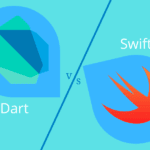The graphical display of data in the form of geographic maps, charts, sparklines, infographics, heat maps, or statistical graphs is referred to as data visualization. Visually presented data is simple to comprehend and evaluate, allowing for the effective extraction of actionable insights from the data. The findings can then be used by relevant stakeholders to make more efficient real-time decisions.
The visual depiction of data is made more accessible with data visualization technologies that include support for streaming data, AI integration, embeddability, collaboration, interactive exploration, and self-service capabilities.
It’s not always easy to consume enormous amounts of info. Data sets can be so massive that it’s nearly hard to extract anything valuable from them. Data visualizations can help with this. Creating data visualizations isn’t always easy. It’s not as if designers can develop a visualization from the start using a data collection with thousands of entries. Sure, it’s conceivable, but who wants to plot dots on a scatter chart for dozens or hundreds of hours? This is where data visualization software may help.
A Complete Overview of the Best Data Visualization Tools
One of the most effective ways to simplify understanding data relationships is to use data visualization. The Sankey diagram is a helpful tool for visualizing the relationships between data items. They were initially used in a publication on the energy efficiency of a steam engine in 1898 by an Irishman named Matthew Henry Phineas Riall Sankey. Drawing these diagrams by hand can be difficult, time-consuming, and tiresome. Still, we now have many tools to generate them automatically, such as Business Intelligence technologies like Tableau, Google Visualization, and D3.JS, among others. Learn more about the Sankey Diagram’s Data Visualization Power.
To visualize big information collections, there are tens, if not hundreds, of programs, tools, and scripts available. Many of them are rather basic and share a number of characteristics. However, a few standouts are either more capable of producing the types of visualizations they can or are significantly easier to use than the others.
Tableau (and Tableau Public)
Tableau has a desktop program, server, and hosted web editions and a free public alternative. Data import options include CSV files, Google Ads and Analytics data, and Salesforce data, to name a few.
As an output option, you can choose from a variety of chart layouts and mapping possibilities. As a result, designers may create color-coded maps that provide regionally essential facts in a considerably more digestible format than a table or chart.
Anyone looking for a powerful approach to generate data visualizations that can be utilized in several scenarios can use Tableau’s public edition, which is free to use. There are many potential uses for Tableau Public, ranging from journalists to political junkies to individuals who want to quantify the data in their own lives. They offer an extensive gallery of infographics and visualizations generated with the public version to inspire others who wish to make their own.
Increase Your Job Prospects with Data Visualisation with Tableau Training
Google Charts
Google Charts, which is coded in SVG and HTML5 and can build graphical and pictorial data visualizations, is one of the leading participants in the data visualization market. Zooming is possible with Google Charts, and it has unrivaled cross-platform compatibility with iOS, Android, and even older versions of the Internet Explorer browser.
QlikView
With about 40,000 clients in over 100 countries, Qlikview is another crucial player and Tableau’s biggest competitor. This tool’s most appealing feature is its highly customizable set. It also includes an extensive range of features, which is a significant benefit. It has sophisticated business intelligence, analytics, enterprise reporting capabilities, and data visualization as one of its core components. For data exploration and discovery, Qlik Sense, a sister program to Qlikview, is utilized.
Fusioncharts
Charting and visualization software based on Javascript is widely recommended. It has quickly established itself as one of the most commonly utilized paid-for goods of its sort. It can create 90 kinds of charts and interface with a wide range of platforms and frameworks, providing it versatility. The essential characteristic of FusionCharts that has made it successful is that it does not require you to start from scratch with each new display. Instead, users can choose from various “live” example templates, then plug in their data sources as needed.
Infogram
Infogram is a drag-and-drop data visualization tool for business reports, infographics, social media postings, maps, dashboards, and more so that even non-designers can use.
The visualizations can be saved in a variety of forms, including PNG, JPG, GIF, PDF, and HTML. Interactive visualizations are also possible, which makes them ideal for use on websites and apps. Infogram also has a WordPress plugin that makes it easier for WordPress users to integrate visualizations.
Plotly
Because of its ability to interact with analytics-oriented programming languages such as Python, R, and Matlab, Plotly is an open-source tool that enables sophisticated and complicated visualizations. Users prefer Plotly for producing, sharing, and altering graphical and interactive data on the web. It is even possible to have it placed on the premises. It can be installed in the cloud. It’s convenient for data mining experts who are continually looking for new methods to organize and present data without code. Users of Plotly can cooperate on the creation, sharing, and modifying of maps and charts. This extra feature increases the speed of visualization and data presentation uniquely while also optimizing the productivity of each member by guaranteeing that they each have their own set of activities.
Sisense
Sisense is a business intelligence application that allows you to create dashboards to track any form of data. Although it is more complicated than Tableau, the dashboard tool is still highly user-friendly. Additionally, interactive data visualization widgets such as Sankey diagrams, scatter plots, and more are available.
Any data set can be used to develop analytics apps using the Sisense API. Furthermore, dashboards can be created without the assistance of a developer.
ChartBlocks
According to the company, data may be loaded from “everywhere” using ChartBlocks’ API, including live feeds. While they claim that data can be imported from any source “in a few clicks,” it’s likely to be more complicated than other apps that have automated modules or extensions for specific data sources.
The tool allows for great customization of the final presentation, and the chart construction wizard assists users in selecting the most appropriate data for their charts before importing them.
Designers can construct almost any type of chart. The output is responsive, which is a significant plus for data visualization designers who want to incorporate charts into websites that will be seen on various devices.
WHAT CHARACTERIZES THE BEST DATA VISUALIZATION TOOLS?
There are a few features that all of the finest data visualization tools have in common. The first is that they are simple to use. There are some pretty tricky data visualization programs available. Some include good documentation and tutorials and are created in a user-friendly manner. Regardless of their other qualities, others are missing in certain areas, excluding them from any list of “best” tools.
The most powerful tools can also deal with large data sets. Indeed, the greatest can combine different sources of data into a single visualization.
The top software can also generate a variety of charts, graphs, and map types. The majority of the programs listed below can create photos as well as interactive graphs. However, there are several exceptions to the wide range of output criteria. Some data visualization tools specialize in one sort of chart or map and excel at it. Those tools are also among the “best” tools available.
Conclusion
We chose our favorites that can be utilized in various work processes because there are too many data visualization tools to name in one post. Choosing the best one for a particular task or problem is only half the battle; the other half is up to you to execute the work.
Author Bio:

I have more than 12 years of experience in the field of Digital Marketing and Data Analysis, currently working as a Digital marketing specialist.








